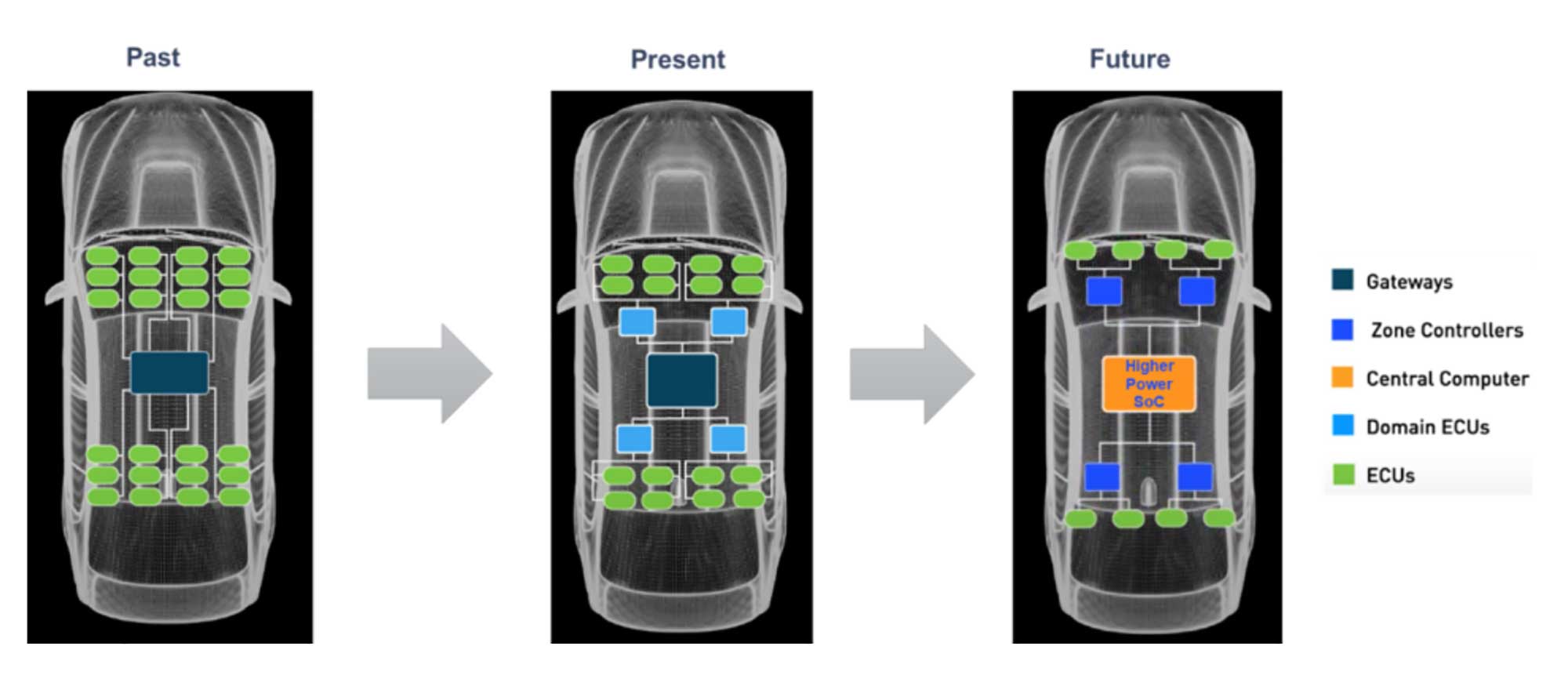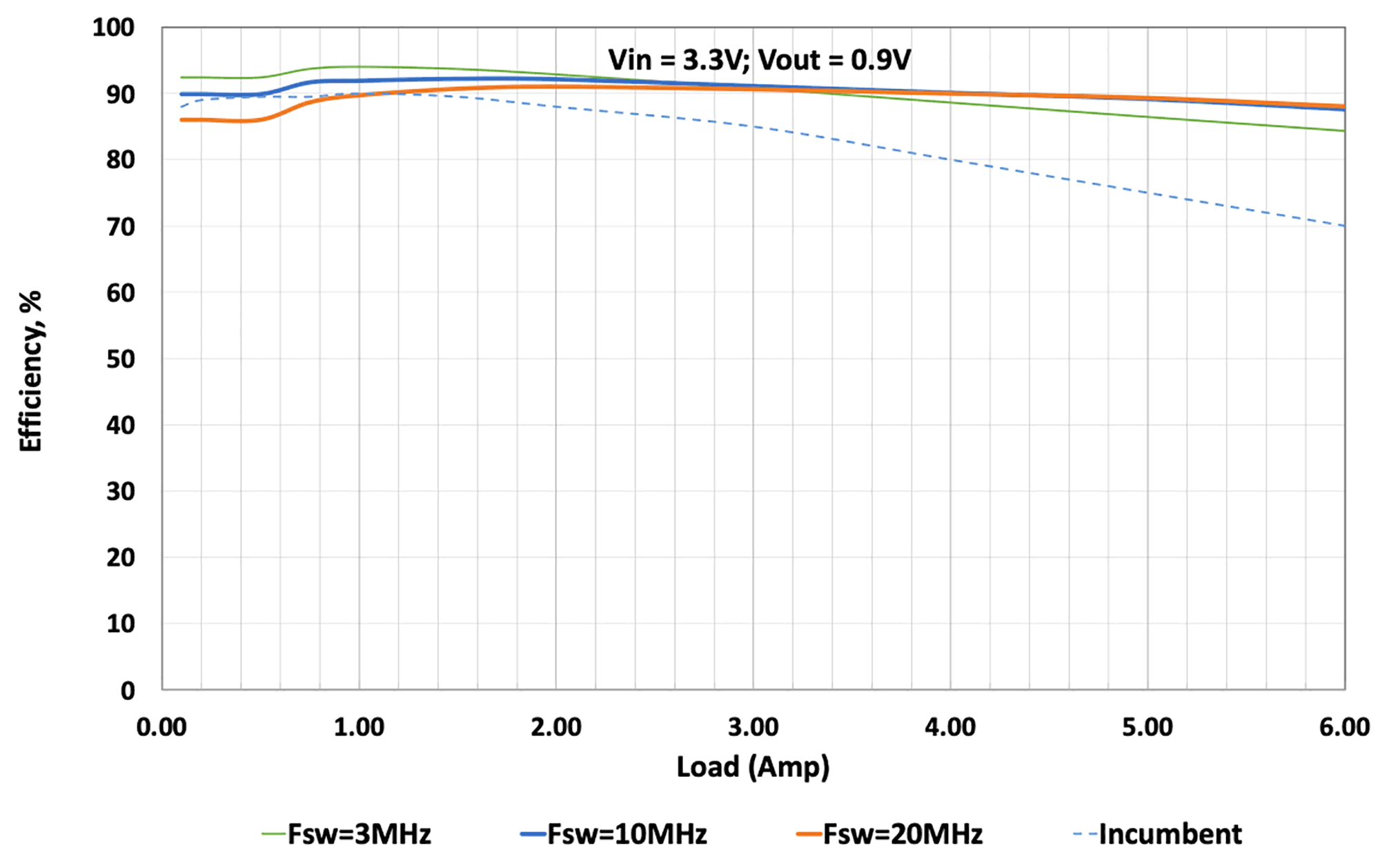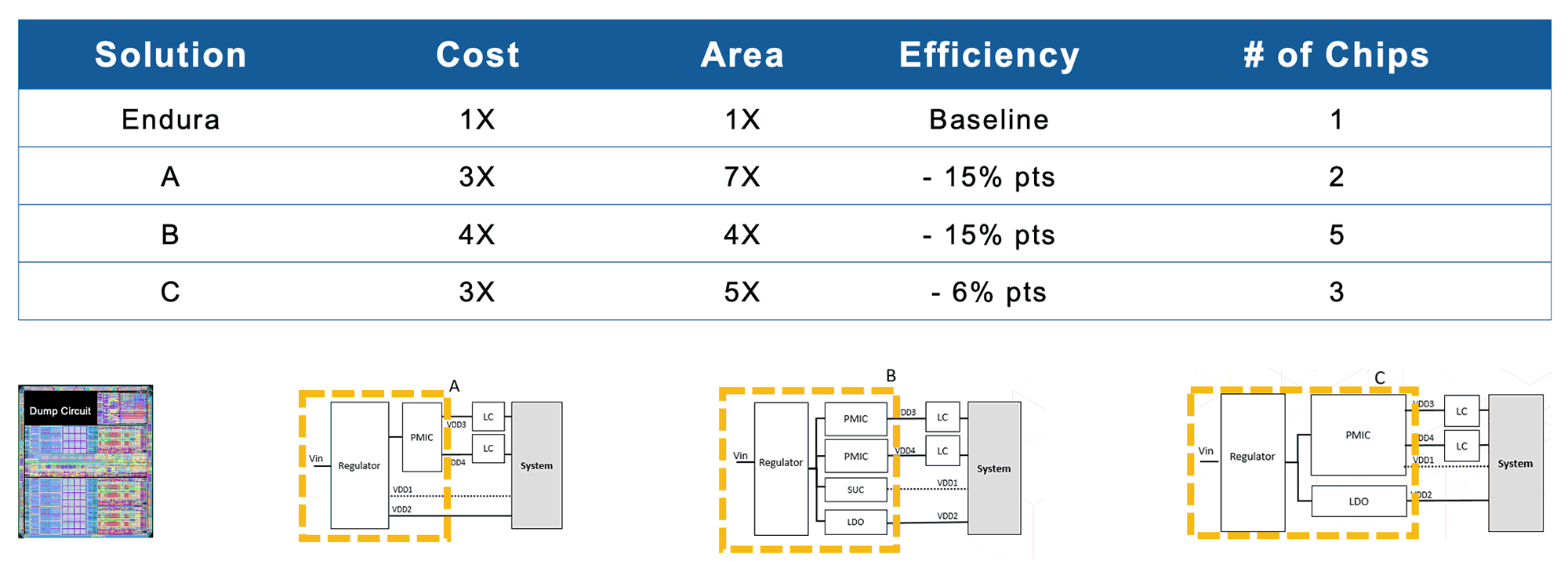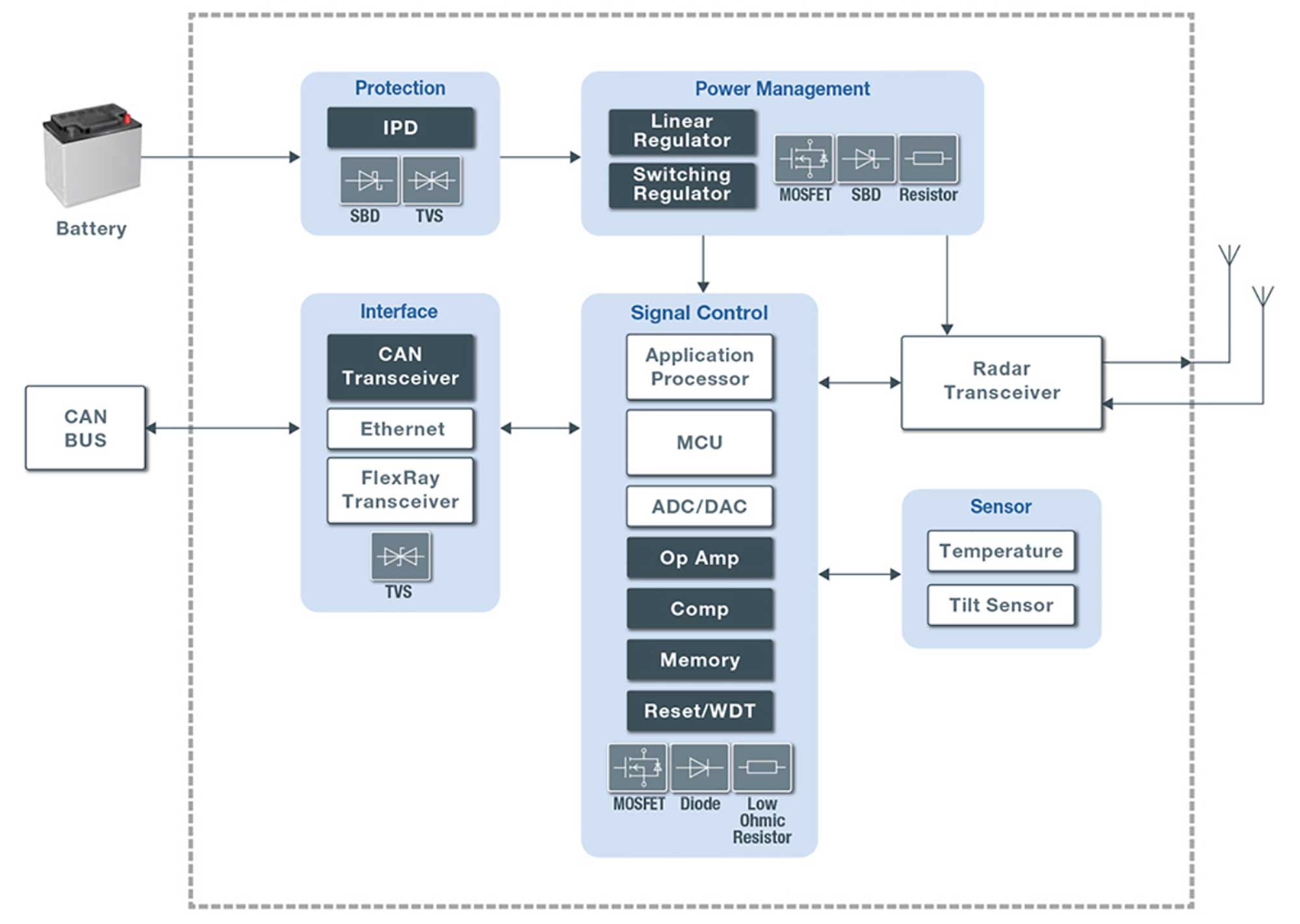Application Study: Enabling Advanced Driver Assistance Systems (ADAS)
Background
The automotive industry is experiencing major changes in vehicle design and supply chain dynamics due to significant driving experience and safety enhancements. Advanced driver assistance systems (ADAS) are delivering many new features to both EV and traditional internal combustion engine platforms.
ADAS can deliver a wide range of safety-enhancing features, including collision avoidance, blind spot detection, pedestrian detection, driver attention detection, lane keeping assistance, adaptive headlights, night vision, parking assistance, adaptive cruise control, rear cross-traffic alert, traffic sign recognition and emergency breaking.
These features can be packaged to deliver various levels of autonomous driving.
Two primary functions needed for ADAS are sensors (e.g., radar) and on-board data processing. For the sensor portion, noise and how the power source manages noise is a critical part of the architecture. The diagram below illustrates the various parts of ADAS.
Regarding on-board data processing, in October 2023 EDN discussed
Design challenges in powering automotive SoC core rails. In that piece, it was stated that, "The increasing need to digitize vehicles requires advanced technology ... For instance, autonomous vehicles require a tremendous amount of high-performance computational horsepower for not only the vehicle itself, but also for the supporting infrastructure."
The architecture evolution of automotive computing was described in the figure below.
 Source: Monolithic Power Systems
Source: Monolithic Power Systems
The article described the vehicle of the future as having a central computer to provide the required computational horsepower to support ADAS features. The SoCs delivering these capabilities will have advanced CPUs and GPUs to process large amounts of data and perform the complex computations that allow vehicles to make decisions in real time.
And these SoCs require advanced power management solutions to handle hundreds of amperes of current, with stringent transient performance and efficiency requirements. And so the power management requirements for automotive applications spans both low noise and accuracy across loads for the RF portion and efficiency across loads and frequencies for the processing portion.
Endura Technologies' Solution
Endura Technologies’ power delivery architecture is ideal for these applications. Endura Technologies’ modular digital control and use of advanced semiconductor process technology enable industry-leading efficiencies and high-speed switching for smaller footprints. This scalable architecture ranges from standard power management devices (sVR) to embedded (eVR) chiplets down to on-chip, integrated (iVR) blocks for optimum point-of-load energy delivery.
With eVR and iVR point-of-load power delivery, compute/watt performance can be optimized which makes the system more efficient, thus reducing the power needed. Improved compute/watt coupled with more efficient power delivery coupled with more efficient power conversion all combine to directly eliminate heat in the system.
Benefits: Efficiency across loads, Ultra-low ripple, BoM
Improving power conversion efficiency for both light and heavy loads means less wasted power, which directly reduces the heat generated. Reduction in heat dissipation of over 50% has been achieved for automotive applications. With efficiency improvements of 6 – 15%, cooling system requirements are significantly reduced. The figure below illustrates efficiency across load for Endura’s platform.
 Source: Endura Technologies
Source: Endura Technologies
In the area of RF performance, Endura technology delivers significant accuracy for radar applications. Thanks to leveraging advanced digital control technology, the voltage regulator (which is traditionally all analog) delivers superior performance for managing ripple, droop, and noise.
The use of smaller passives and the elimination of others results in a 5 – 7X reduction in BoM area with 3 – 4X lower cost. The figure below illustrates several scenarios for a corner radar application.
 Source: Endura Technologies
Source: Endura Technologies
 Source: ROHM Semiconductor
Source: ROHM Semiconductor Source: Monolithic Power Systems
Source: Monolithic Power Systems Source: Endura Technologies
Source: Endura Technologies Source: Endura Technologies
Source: Endura Technologies